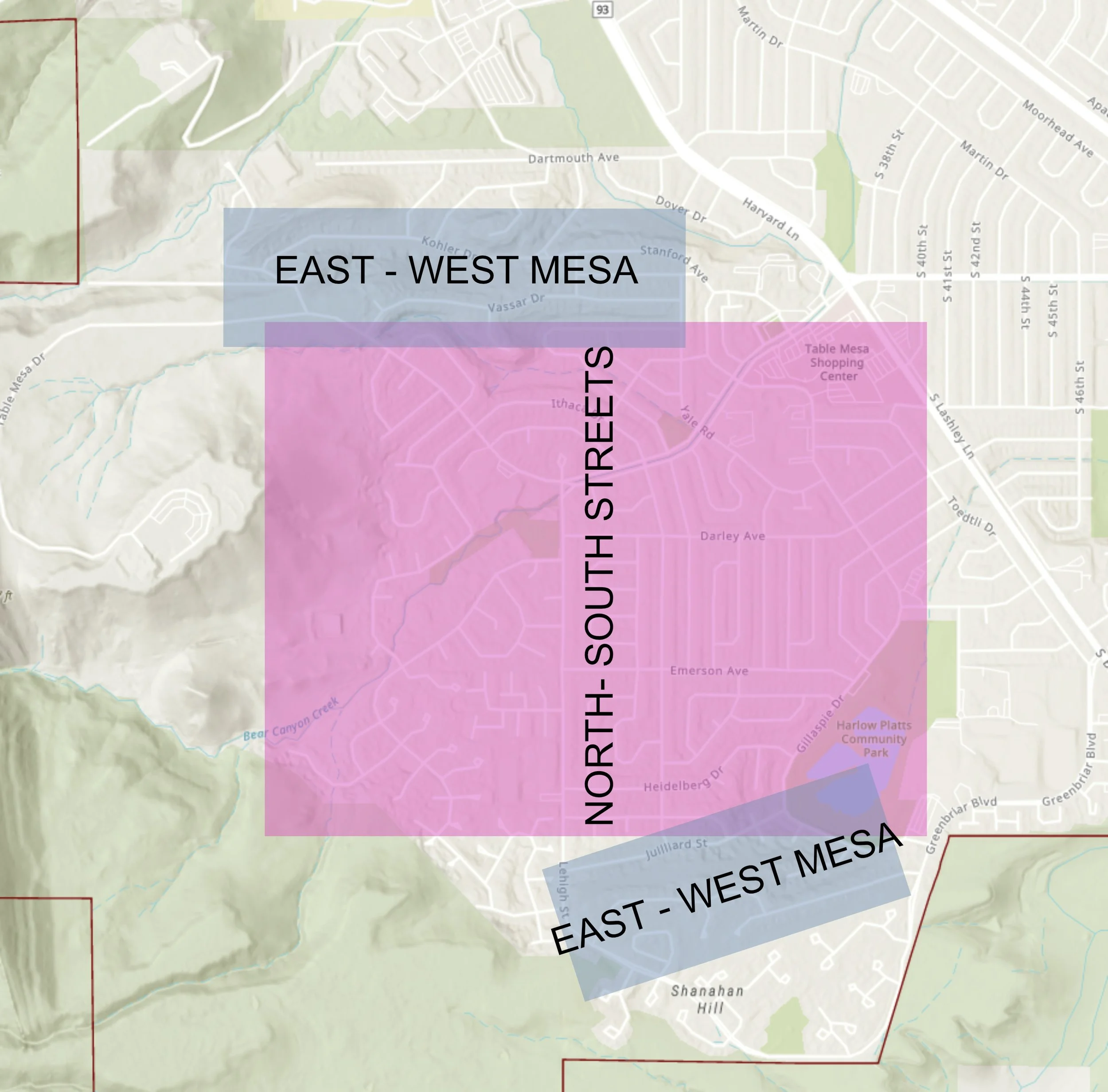I’ve written about the City of Boulder’s Solar Shadow Ordinance in the past and the needless complexity that it adds to designing new buildings, and especially additions. Most of the single family residential zones in the City are regulated by these solar shadow limits and they are often the most restrictive parameter that new projects have to meet. Not a simple or straight-forward task for anyone to calculate.
And not all properties are the same.
The solar shadow ordinance regulates the height and location of buildings based on how they might cast a shadow on adjacent lots on the longest shadow day of the year - December 21st. As these shadows project to the northeast and northwest, different lot orientations can make a large difference in how much this ordinance restricts what can be done with a property.
Let’s look at a secton of South Boulder
Above is a crude map of the Table Mesa, South Boulder area. This portion of town is bookended, to the north and south, by two east-west running mesas. The streets that run along these mesas follow its length and run east-west. The streets in between the mesas typically run north to south. All this means that the lots run in different directions in these areas, some north-south, some east-west.
The lots that run north-south, the ones located along the mesas, are greatly advantaged in what can be built by the Solar Shadow Ordinance.
These diagrams demonstrate that there is greater building potential in terms of total floor area allowed, on streets that run east-west. Maybe not a huge advantage, but significant. Add that to the fact that these mesa-top lots are typically larger as well, allowing for even greater floor area limits, and the street orientation difference is greatly reinforced.
Does it come as any surprise that the largest houses sit on the largest lots and due to their mesa-top locations, often have the best views? Likely not. But the additional disadvantage of lot orientation experienced by the smaller lots down on the flats between mesas creates and reinforces a status difference based largely on which direction your street runs.
So, buyer beware.
If you are looking to build or add to a house and your dreams are greater than 3500 square feet or so, look for lots on those east-west streets.


